After my trip to a Japanese shop called Don Don Donki, my mind couldn’t shake out the image of a dessert that I wished I had bought with the cookies in my haul. Why was I thinking about this item in particular, out of all the Japanese foods available in-store? The answer is pretty simple: it was on my foodie bucket list! I’ve heard about this fascinating Japanese eat for the longest time, but I had never tasted it. To my delight, that was about to change!
Hence, I swung by the shop to grab a box on a late weekday afternoon. Plus, there’s nothing better than being surrounded by delicious eats at the shops after a productive day! This time, I came prepared with a mini cooler bag to bring this goodie home.
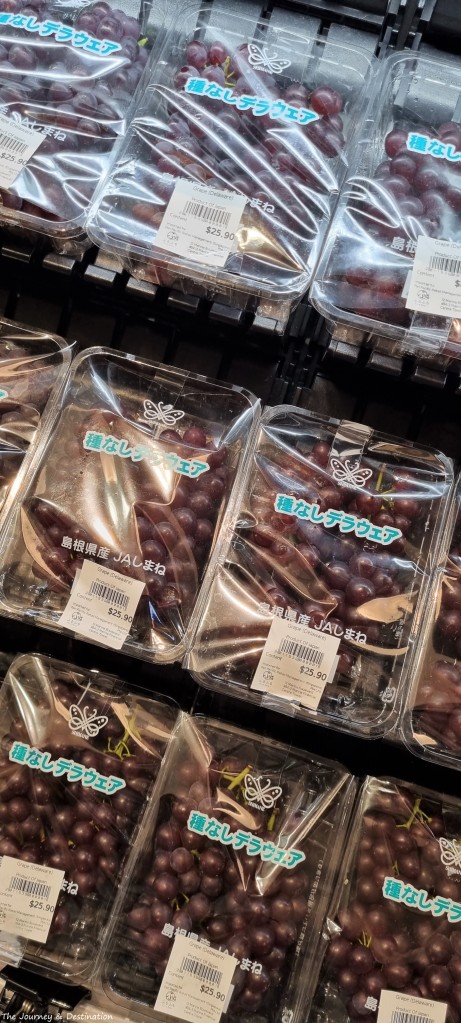
Of course, a trip to Don Don Donki isn’t complete without unusual finds that make shoppers do a double take, like the grapes. These aren’t any ordinary grapes, though… they cost S$25.90 (US$18.93)! They are some of the most expensive grapes I’ve ever seen in-person, and they are actually pretty small!
As much as the grapes astounded me, I knew I had to fulfill my foodie mission. And so, I made my way deeper into the shop and headed towards the chilled desserts section.
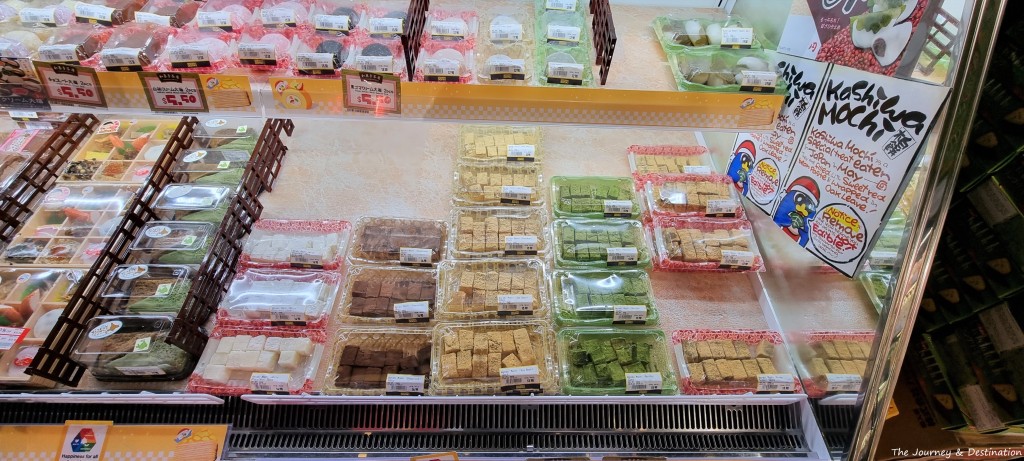
In a section that is home to various refrigerated Japanese wagashi (sweets), a dessert named warabimochi was calling me. At this shop, warabimochi comes in a handful of inviting flavor options like matcha and chocolate. Out of all the flavors, the one that was saying “bring me home!” that day was the original version, which is coated in soybean powder (or ‘kinako’ powder in Japanese).
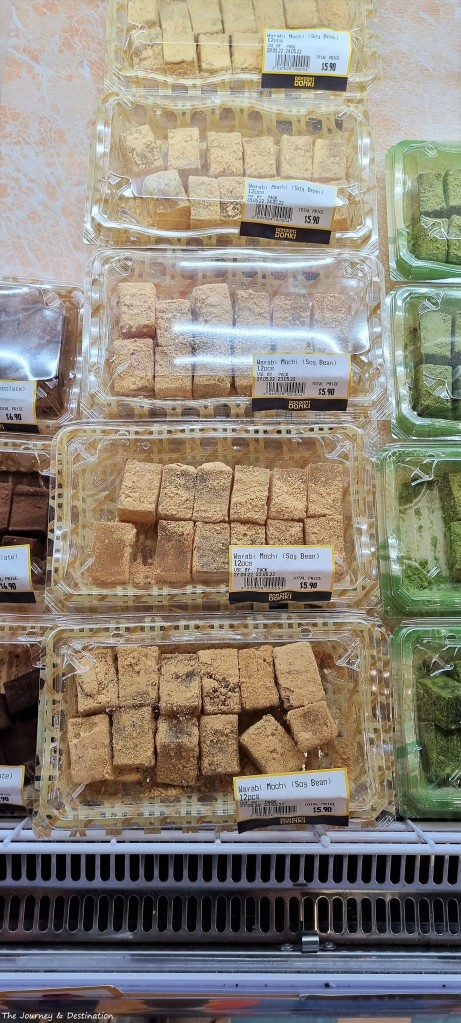
I’ve heard about kinako powder before, but my taste buds were yet to be introduced to this unique ingredient. Also, as someone who adores mochi and mochi-like desserts, I was excited to add warabimochi to my collection of mochi experiences… especially because this is a different mochi-munching adventure in comparison to the usual mochi delights I tend to eat! To find out a little more about warabimochi, I waved my metaphoric magnifying glass onto Japan’s dessert realm.
A Bit About Warabimochi
Warabimochi is a classic dessert in Japan’s traditional sweets scene. According to my sleuthing, the Kansai region (where places including Kyoto and Osaka are located) is the area to be for fabulous warabimochi as it is a much-loved summer pick by locals.
While warabimochi does have the word ‘mochi’ in its name, glutinous rice flour isn’t an ingredient in this dessert. Traditionally, it is made with bracken starch (hence the ‘warabi’) from the bracken plant, which is a fern. Nowadays, it is very common to find warabimochi made with other starch substitutes like tapioca starch and potato starch, as bracken starch is pricey. In fact, the ‘mochi’ part is reflected through its chewy texture. The finishing touch to traditional warabimochi is a coat of kinako powder, which is also one of the prominent flavors that stars in the treat.
Kinako
Kinako is a powder made from roasted soybeans. It is used in traditional Japanese sweets, especially mochi. One of the most fascinating trivia about kinako is that it is most commonly described as having a nutty flavor. Kinako has made its entrance in the baking realm, whereby bakers who love Japanese flavors have created various cake recipes that feature this ingredient. Kinako ice cream does exist in Japan too, and it made an appearance in a special Häagen-Dazs ice cream dedicated to kinako mochi. Beyond munch-able kinako eats, kinako drinks have been included in some cafés’ seasonal menus – Starbucks created a special Kyoto-exclusive drink that featured kinako in 2021!
Greetings, Warabimochi!
The time had finally arrived for me to unbox my warabimochi! Needless to say, I was very excited.
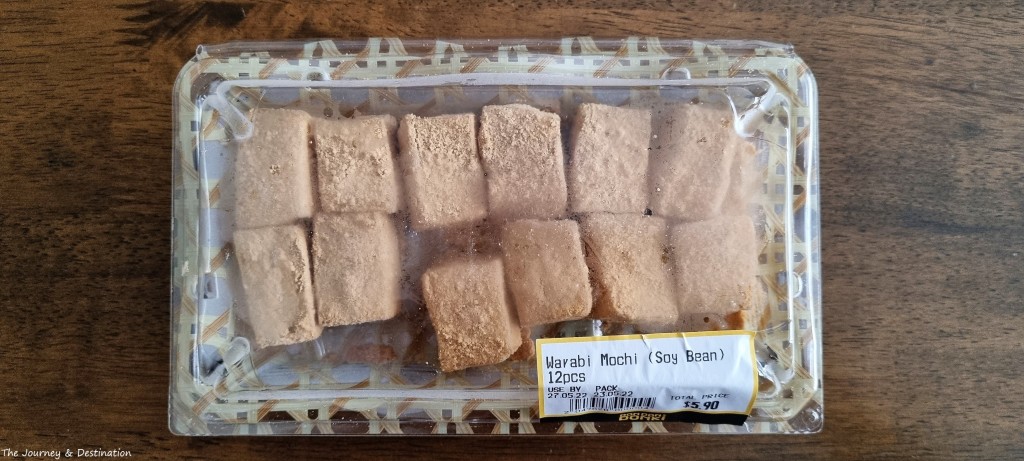
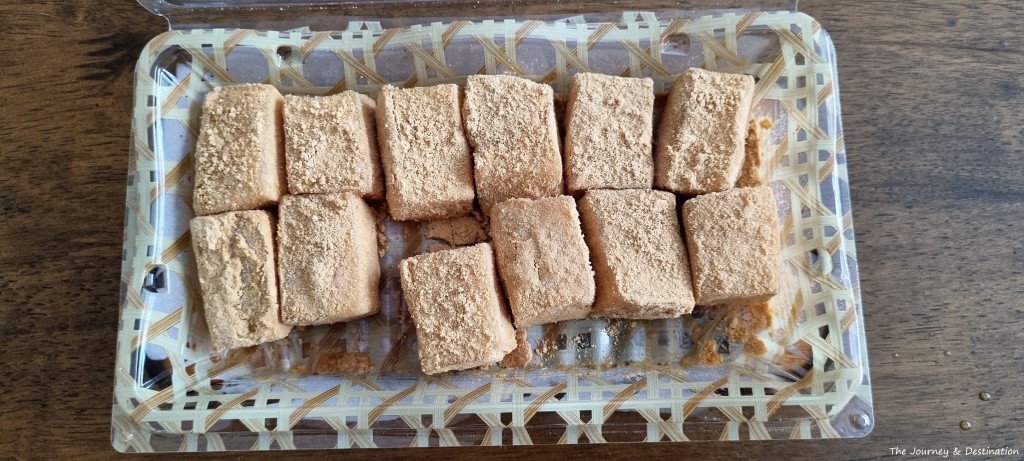
At first glance, these warabimochi pieces interestingly reminded me of decadent chocolate truffles, particularly because of the kinako powder.
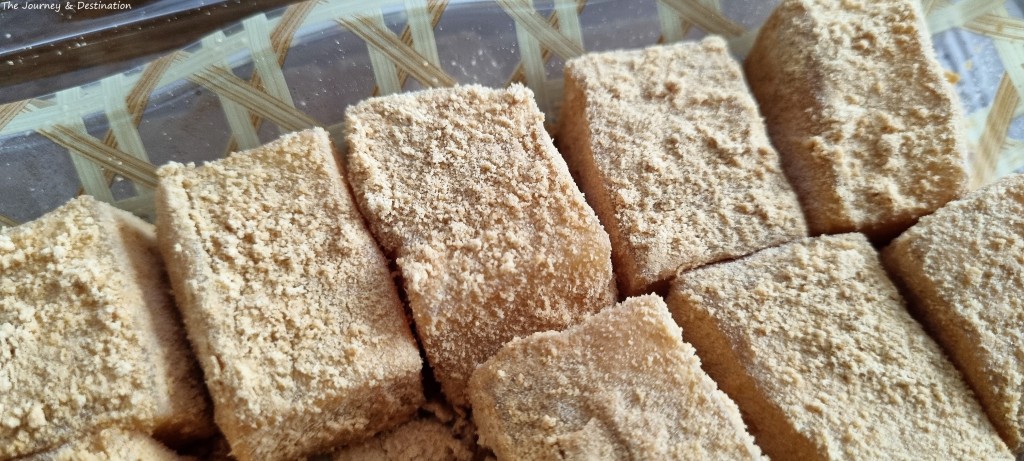
The kinako possesses a brown hue with a shade that seems close to crushed peanuts. Beneath the kinako coat, the warabimochi itself possesses a reminiscence to jelly/agar-agar with its translucent appearance and shine. Slicing into a piece to measure its ‘mochi-ness‘, its texture is squishy like mochi, but firmer.
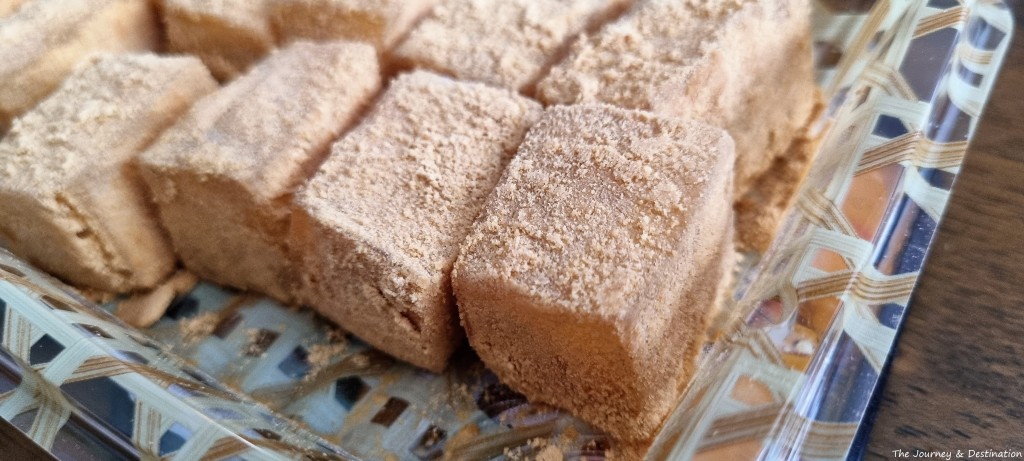
Taste Test
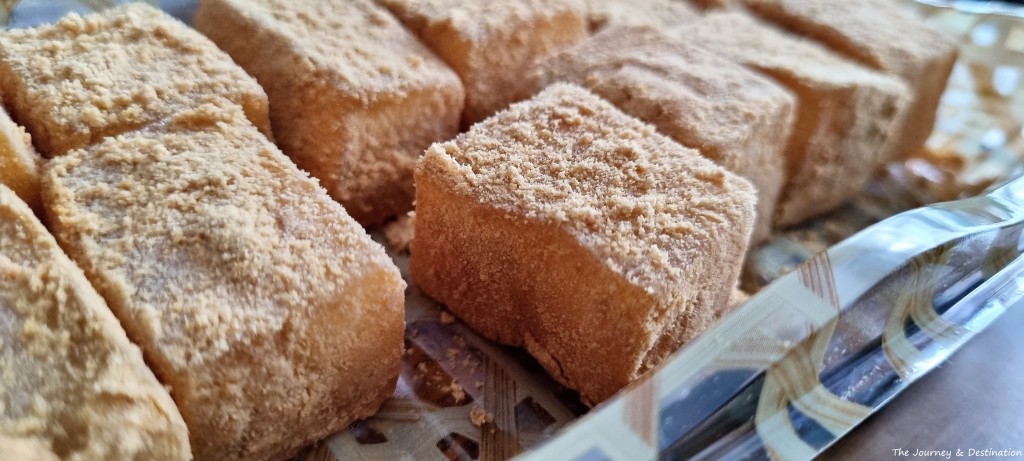
From my very first bite, the treat felt like home to me primarily because of its texture, but a twist is present. The easiest description I can think of for this confection’s texture is jelly meets mochi. The warabimochi base is chewy and soft, and the kinako powder sticks to each piece very nicely. This is where the warabimochi’s ‘mochi’ magic comes alive!
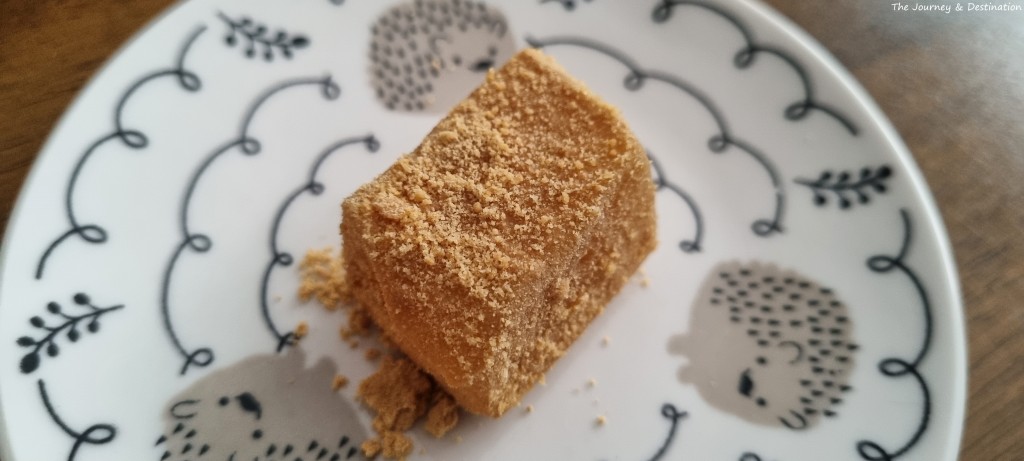
Holistically, the confection’s flavors are well-balanced as the flavor notes shine collectively. While chewing thoughtfully, my taste buds detected a sweet note from the warabimochi itself, and the kinako powder isn’t on the super sweet side. The kinako does add a note that is somewhat nutty, but it has its own lovely distinctive flavor which makes it different from regular nut-based powders.
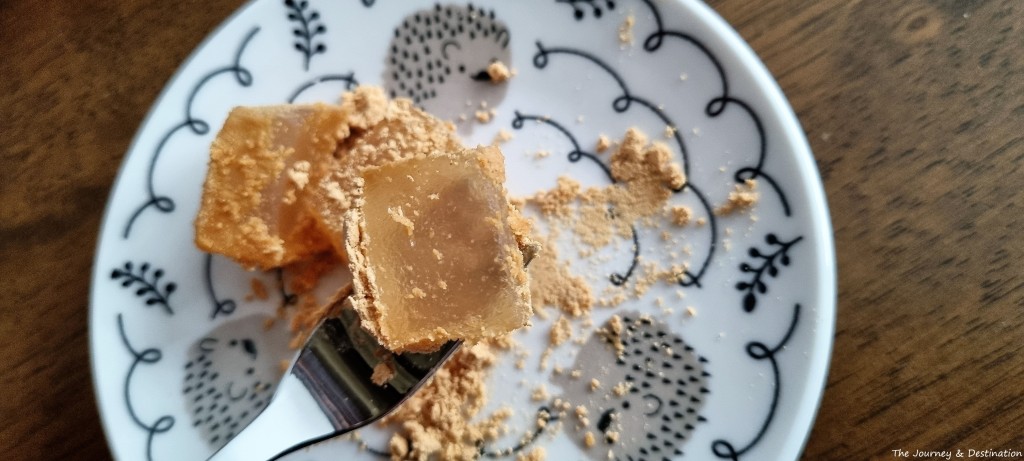
The main elements – the warabimochi base and kinako powder – go hand-in-hand, hence presenting a pleasant flavor combination that complement each other without competing for the spotlight. In my opinion, each piece possesses tones that would appeal to the palate of those with a mild sweet tooth.
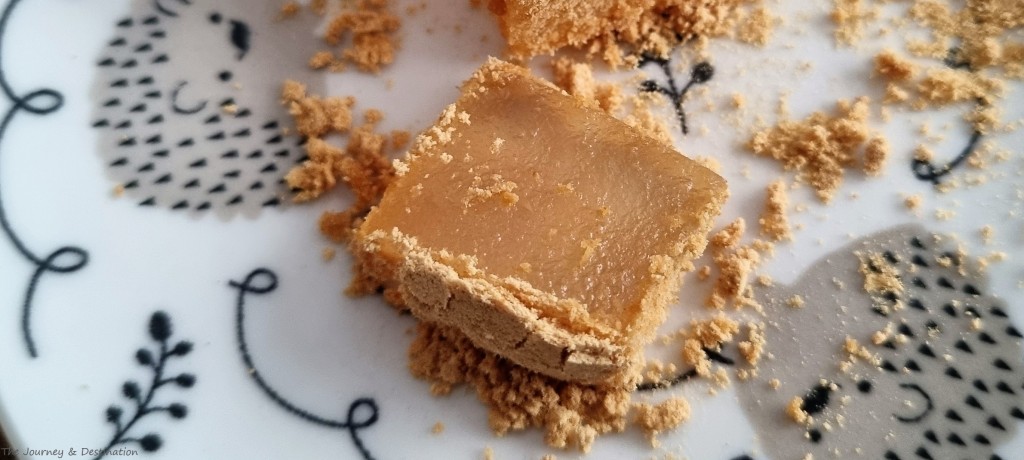
I highly recommend eating it cold, as it is a wonderful refreshing snack or dessert on a warm day. As it has been incredibly hot in the Lion City lately, I enjoyed the warabimochi a lot more – there’s no better time than the present for experiencing warabimochi’s deliciousness! The foodie stars certainly aligned in the timing of this adventure!
I can finally tick ‘warabimochi’ off my list! I can’t wait for my next foodie adventure!
